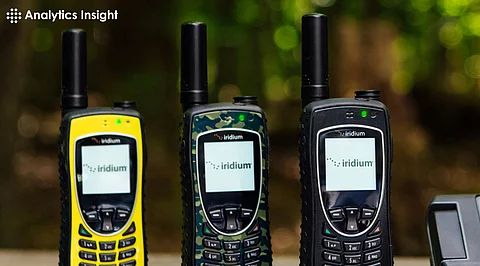

In 2025, satellite phones are enjoying a resurrection — once foreign items of adventure and professionals in remote areas, but now trendy gear for those looking to enjoy some much-needed time off from Zoom calls. Twisted up to be seen as cool damaged devices, they are now gaining traction that is not niche based on technological advancement, changing consumer needs and the need for proper means for communication in the always busy connected society. This isn’t nostalgia, this is a bigger move and a way that communication technology is trying to meet those holes that traditional networks leave.
The increase in the usage of satellite phones is the sequel to developments in satellite technology. New satellite players such as SpaceX’s Starlink and Amazon’s Kuiper, are bringing LEO satellites to provide faster more reliable global coverage. For example, Starlink introduced satellite texting service nationwide in New Zealand at the end of 2024, paving the way to make satellite communications cheaper all around the world.
Other players such as smartphone makers are also coming on board with the activation of satellite connectivity in the common products. The first service, “Emergency SOS via Satellite,” was launched in 2023, that ensures emergency messages are sent from locations with no cellular or WiFi access. It is believed that Samsung plans to integrate the same in its model, the Galaxy S25 Ultra due for release in 2025. The integration means that satellite communication is on its way toward becoming more widespread, as it can now be integrated with existing systems.
The global satellite communication market is forecast to witness unprecedented growth at a Compound Annual Growth Rate (CAGR) of 12.3% from 2025 to 2034. The market was valued at $23.1 billion in 2024, and it will grow as demand for internet connectivity in far-off locations surges. In the same token, the satellite phone market is anticipated to grow by $111.7 million during the period 2023 to 2028 at a CAGR of 3.36%. The growth shows an increasing preference for satellite phones because they are reliable in areas that are hard to access and vital in an emergency.
Further, satellite communication became even more important due to natural disasters. Satellite phones reach out when hurricanes, earthquakes, or floods bring down traditional cellular networks, offering a lifeline for emergency responders and people affected, to stay connected. Satellite phones have been indispensable in disaster preparedness because of their reliability.
Their increasing accessibility is the main reason for the resurgence of satellite phones. These devices were expensive and bulky, so historically have been used only in certain industries. Modern satellite phones are however much smaller and more economical, making them appealing to everyday consumers. The latest bridge between the satellite and smartphone is the convergence to integrate satellite connectivity into smartphones, thus leading to the elimination of secondary devices without disrupting attempts to communicate.
But most of all, the arrival of hybrid communication systems with a cell and satellite network going hand in hand have greatly advanced satellite technology. In addition, users can easily switch between networks with no interruption in service wherever cellular coverage may be limited, like in the middle of rural expanses or abroad.
Yet as advanced as they've become, satellite phones come with their inconveniences. Coverage gaps and signal latency continue to be an issue. However, the LEO satellites do not have quite as good connectivity as traditional geostationary which is entitled to the same good connectivity in urban areas that have, for example, tall buildings and dense foliage. It also impacts the quality of the signal; real-time communication is not reliable in some cases due to atmospheric conditions.
Cost remains another barrier. Prices have fallen, but satellite communication services are still more expensive than our typical cellular plans. The decreasing cost and improving affordability of satellite connectivity are expected, however, from the increasing adoption of the technology by smartphone manufacturers.
Satellite phones are contributing importantly to the formation of the future of global communication. In providing connectivity to remote and underserved areas where traditional networks are in place, they are closing the digital divide. For example, Project Loon and Starlink are behind in creating a more inclusive internet environment, so even the most remote communities can have ways to communicate.
Satellite phones are also extending emergency response capabilities. With the increasing intensity of natural disasters, a reliable communication channel can still save lives. Specifically, this is very important for emergency services, government and humanitarian organisations operating in a harsh environment.
Satellite phones have practical benefits as well as developing as symbols of resilience in our increasingly uncertain world. When people become more prepared and more self-reliant the feeling of safety and reliability that Satellite Communication offers cannot always be equalled by cellular networks.
While the signal quality and price will continue to be challenging, the use of satellite phones to help fill these critical communication gaps means that they are an absolute necessity to the current communication landscape.
With the future of satellite technology, satellite phones are set to assist in the closing of the communication gap, improving disaster response, and providing for a fully interconnected world. Satellite phones are growing in popularity for emergency use, global travel, or remote work, and they're proving that they're here to stay, delivering a mix of today's problems and tomorrow's solutions.
Join our WhatsApp Channel to get the latest news, exclusives and videos on WhatsApp
